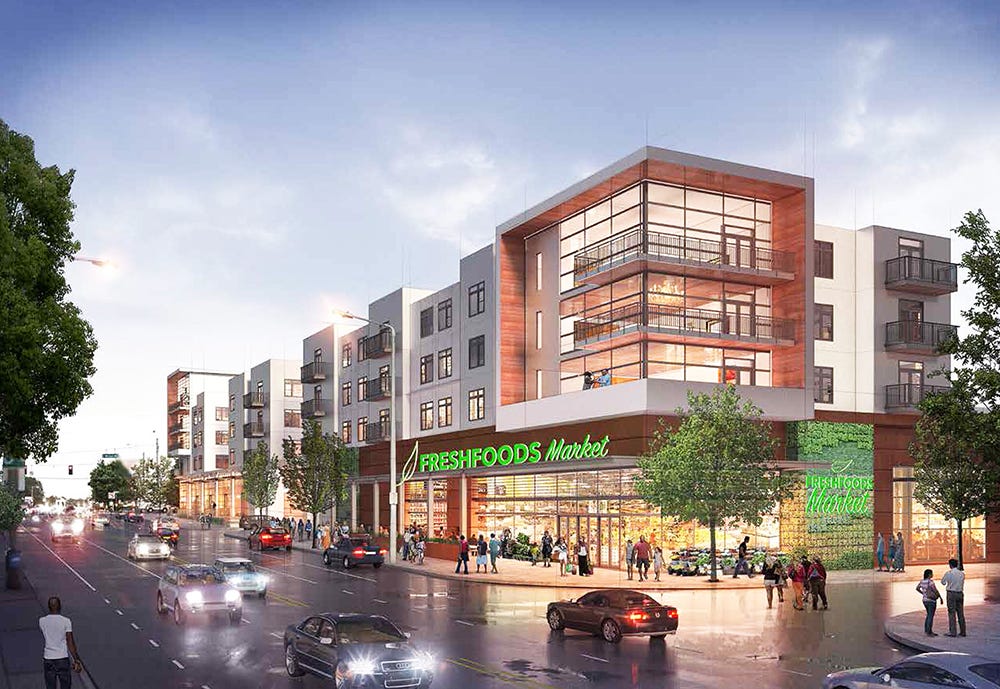
Could a Nearby Grocery Store Be The Answer For Your Next Real Estate Investment?
by David Z Beitz, Co-Founder and Partner at Planned Grocery, part of the BCI Media Group
A lot goes into the decision making process around purchasing real estate. For commercial real estate the primary factors are financial such as sales price, comparable sales, pro-formas, rent rolls, and cap rates. Other data to consider may include traffic counts, demographics, property access, easements, and zoning. Less quantitative factors may include property attractiveness, deal flow in the region, and barriers to entry for the market.
Could a new grocery store nearby impact the value of a property?
According to the data, in some cases the answer is yes.
Residential Homes
A recent study by ATTOM Data Solutions looked into the relationship between grocery stores and home values. The study was done by looking at home value changes from 2014 to 2019 in relationship to the presence of different grocery store brands. All data was compiled and analyzed at the zip code level. The results of the study showed that the presence of Trader Joe’s, Aldi, and Whole Foods in the same zip code correlated with home prices going up on average. The average home seller return on investment with these three grocery stores in the same zip code was 37% nationwide. (Check out the full study here: https://www.housingwire.com/articles/49767-this-is-how-grocery-chains-affect-a-homes-value/)
An older economics research paper from the University of Chicago and Brigham Young University found that home prices increased between 2 to 3 percent when a new Walmart opened within .5 miles. Home prices increased 1 to 2 percent for homes located between .5 and 1 mile of the new store. Researchers of the study analyzed 159 Walmart store openings between 2000 and 2006 and compared home prices 2.5 years before and after the Walmart opened.

Multifamily
A report published last year (2019) by Newmark Knight Frank, titled “The Grocery Store Effect” studied the impact of new grocery stores on rent prices of multifamily real estate. Looking at 42 recently opened grocery store in the Washington D.C. metro area the study tracked how multifamily rents changed after a new grocery stores opened. The study found that multifamily units near new grocery stores received rents 5.1% higher than their sub-market average (at the time of grocery store opening), while multifamily units located in mixed-use developments with a grocery store received a 23.4% rent premium above their sub-market (also at time of grocery store opening). When the study broke down individual grocery brands, Whole Foods was found to have the largest impact on rents. Multifamily units within a 1 mile radius of a newly opened Whole Foods received rents 8.4% higher than other multifamily units in the same sub-market. (Get the white paper here: https://www.ngkf.com/insights/thought-leadership/the-grocery-store-effect).
Due-diligence on future grocery store sites made easy
Grocery stores drive traffic and often become a hub of activity for the communities they serve. These three studies above show that under the right conditions grocery will drive returns for residential homes and provide increased rents at multi-family developments, thus increasing the value of the multi-family property. If it comes down to two similar property investment opportunities, a planned grocery store nearby could make the deciding difference.
Planned Grocery® is where investors can research when and where new grocery stores will go.
Mentioned in: WSJ, Bloomberg, Business Insider, San Francisco Business Times, and Forbes.
Current clients include: Whole Foods, ShopCore Properties, Wegmans, Regency Centers, Lowes Foods, Phillips Edison & Company, and many more.
Check out: plannedgrocery.com for more information.

